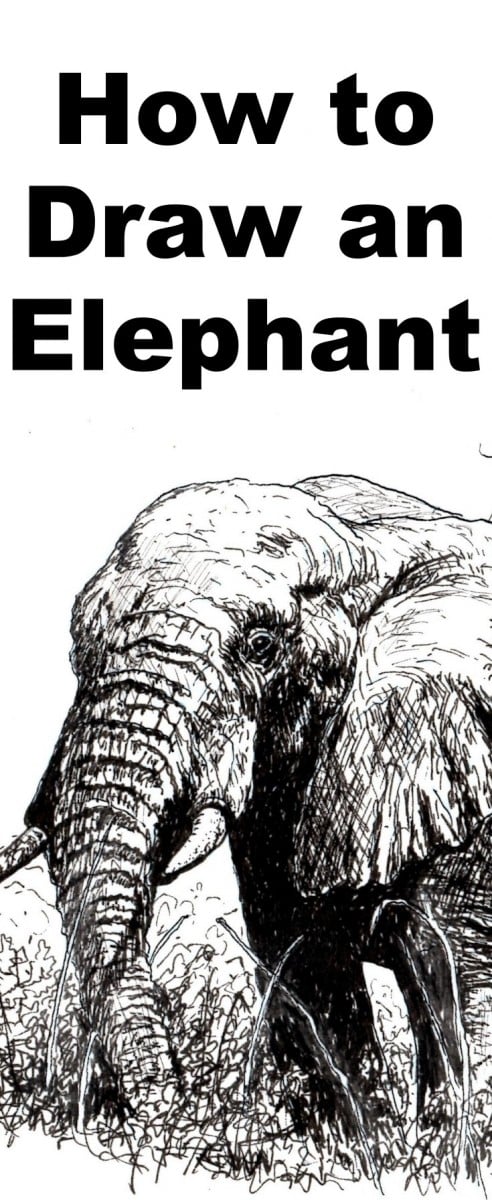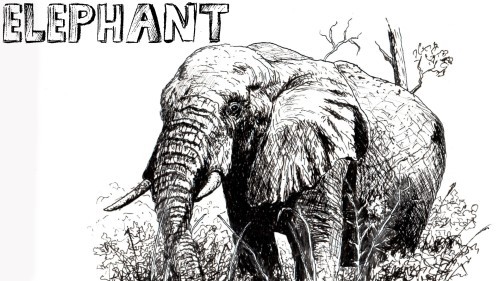Template
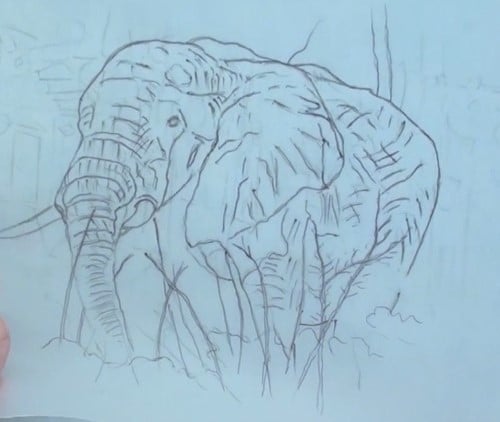
Tape the template to your drawing paper and with a blue dressmakers carbon paper, trace the outlines to the paper.
Drawing the outlines
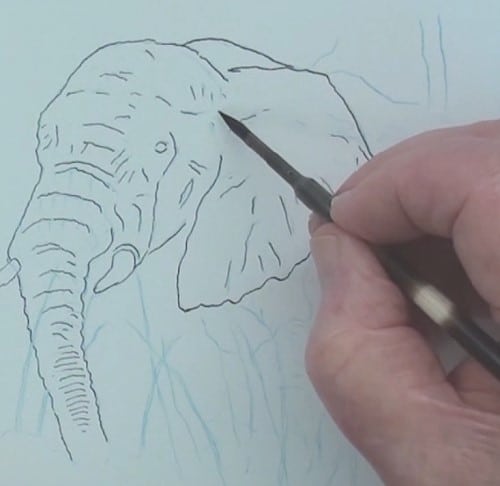
Using a mapping pen, or similar thin pen, draw in all the outlines. Don’t make the eye too big, They have comparatively small eyes.
Drawing the main grasses
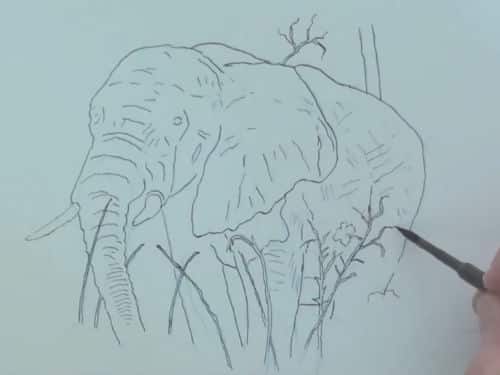
Carefully draw in the main grasses and twigs that overlap the elephant’s body.
Detail the eye and start the trunk
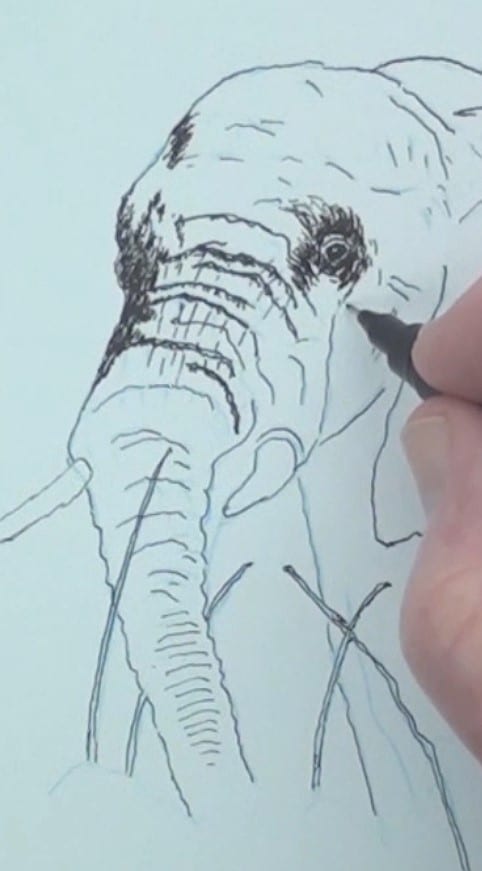
As mentioned earlier on the eye is very small. Be very careful to leave the small highlight in the eye. With a 0.2mm waterproof black pen, and with small strokes, draw in the folds of the trunk and the shading around the eye.

Part of the trunk is completed and begin shading in the neck area with cross hatching. Notice how the detailing of the trunk gets thinner and lighter lines as drawing progresses towards the tip.
Begin shading the belly

Shadow in the belly with close crosshatchings and for the lighter areas leave a little more space between the lines. Carefully leave the light areas of the grass and twigs.
Adding texture to the body

Begin adding the crinkle lines of the skin taking note of the various fold lines. The lines become thinner in the sun area. Add just a part of the tree for interest.

Shade in the front legs using curved lines to indicate the rounding of the legs. Finally add the crosshatching.
Shade the folds in the ear
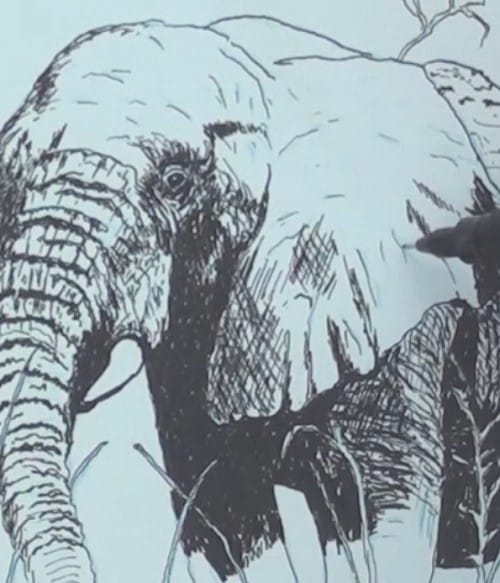
Begin the shadow areas with some crosshatching. Be very careful to keep the tonal range correct. Begin light, and it can be darkened up later as required. The drawing can be spoilt if you darken up too soon.
Continue with the trunk
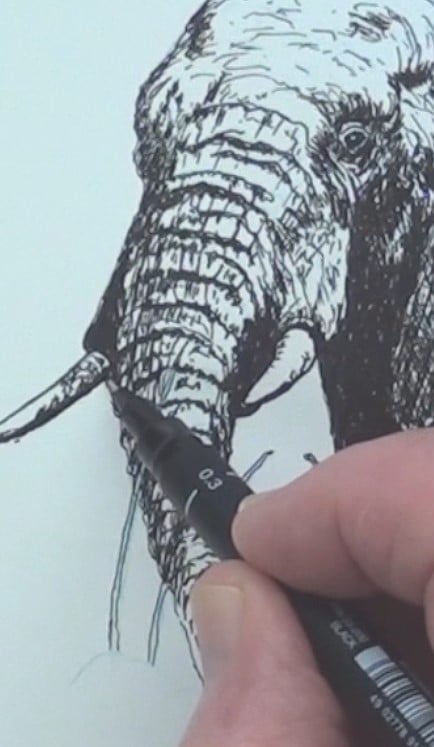
Add the shading where the tusks protrude. Add the shading down the side of the trunk. At this point the trunk disappears in the long grass.
Draw the grass
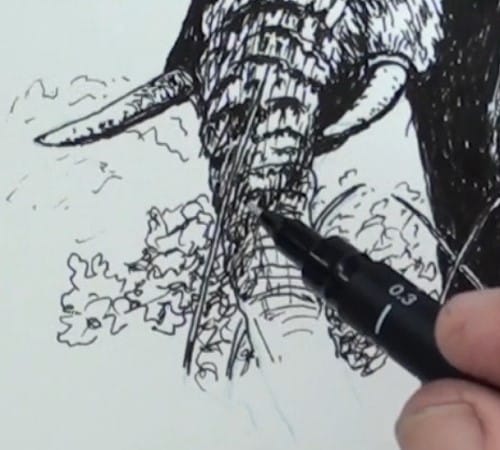
The bushes at the rear are drawn in with the squiggly marks learned with the introduction to the Pen and Ink series of lessons.
Blend in the grass and the elephant legs with a relatively smooth transition. Finish off with a few vertical strokes to give the impression of grass among the small shrubs.
Final drawing
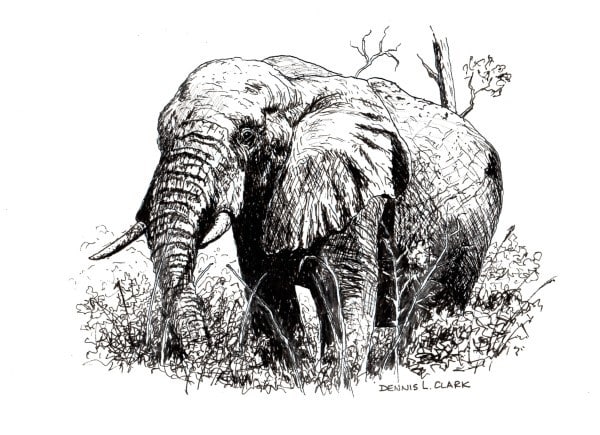
Click the button below to view the real time follow along version of this class:
Pin Me
